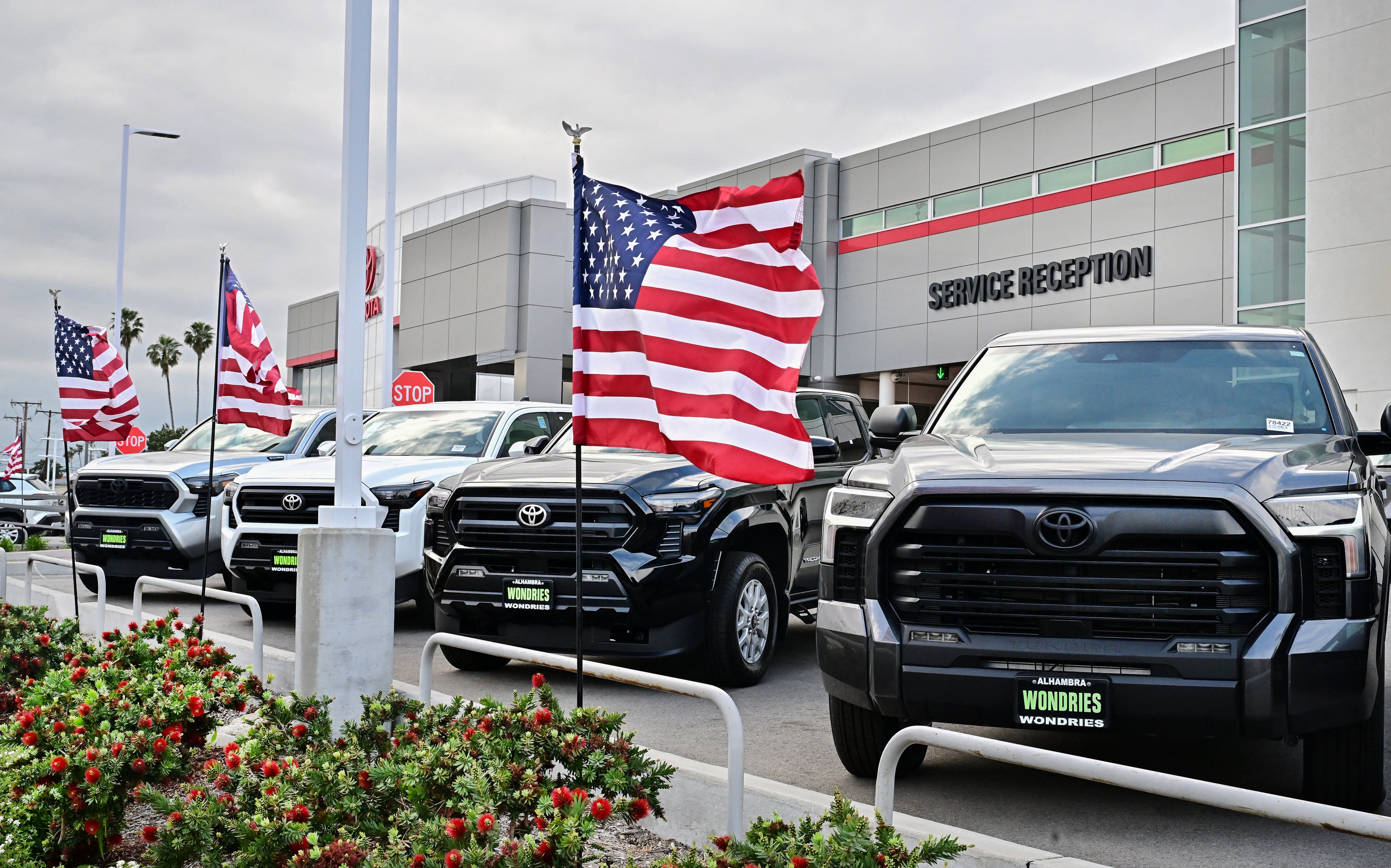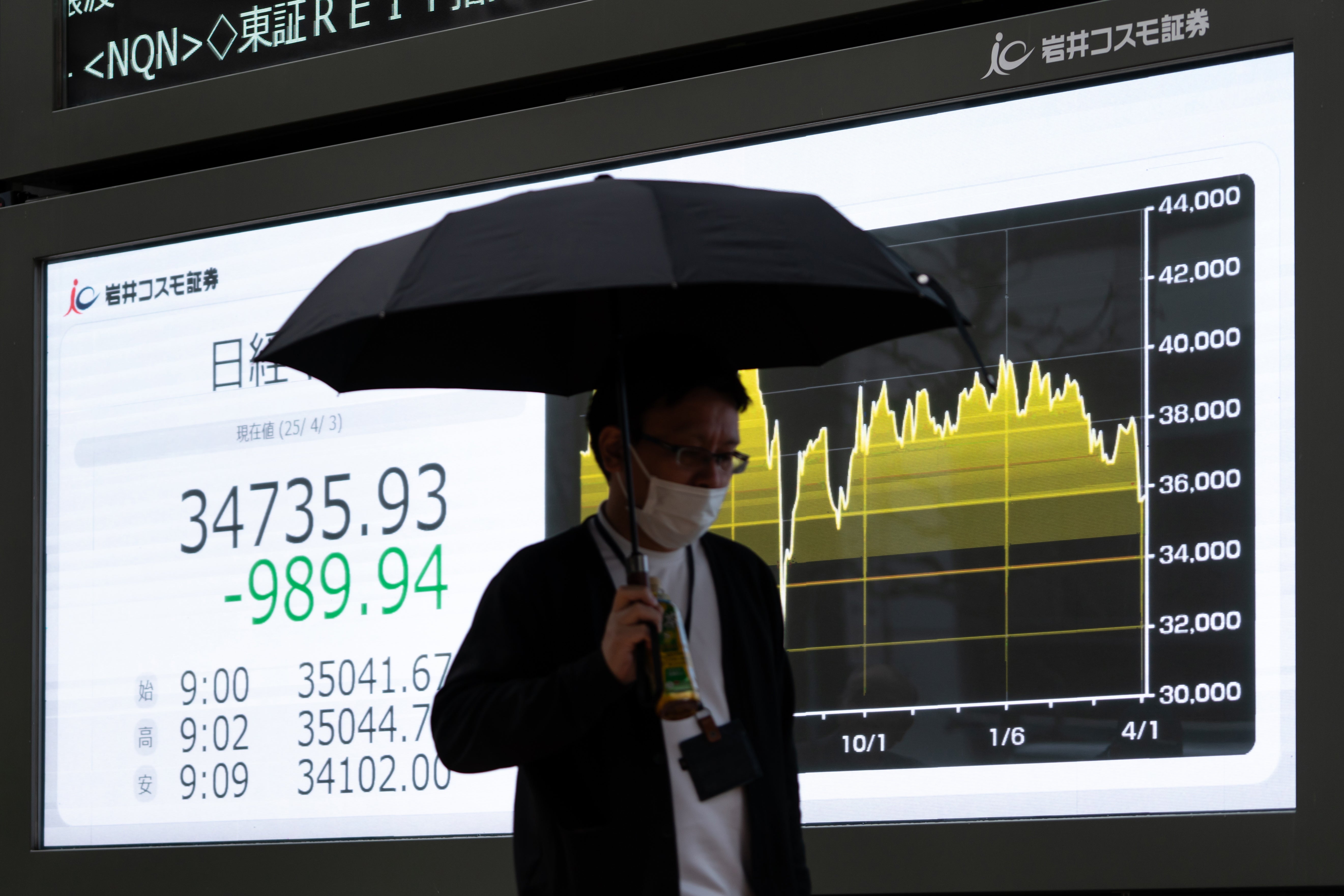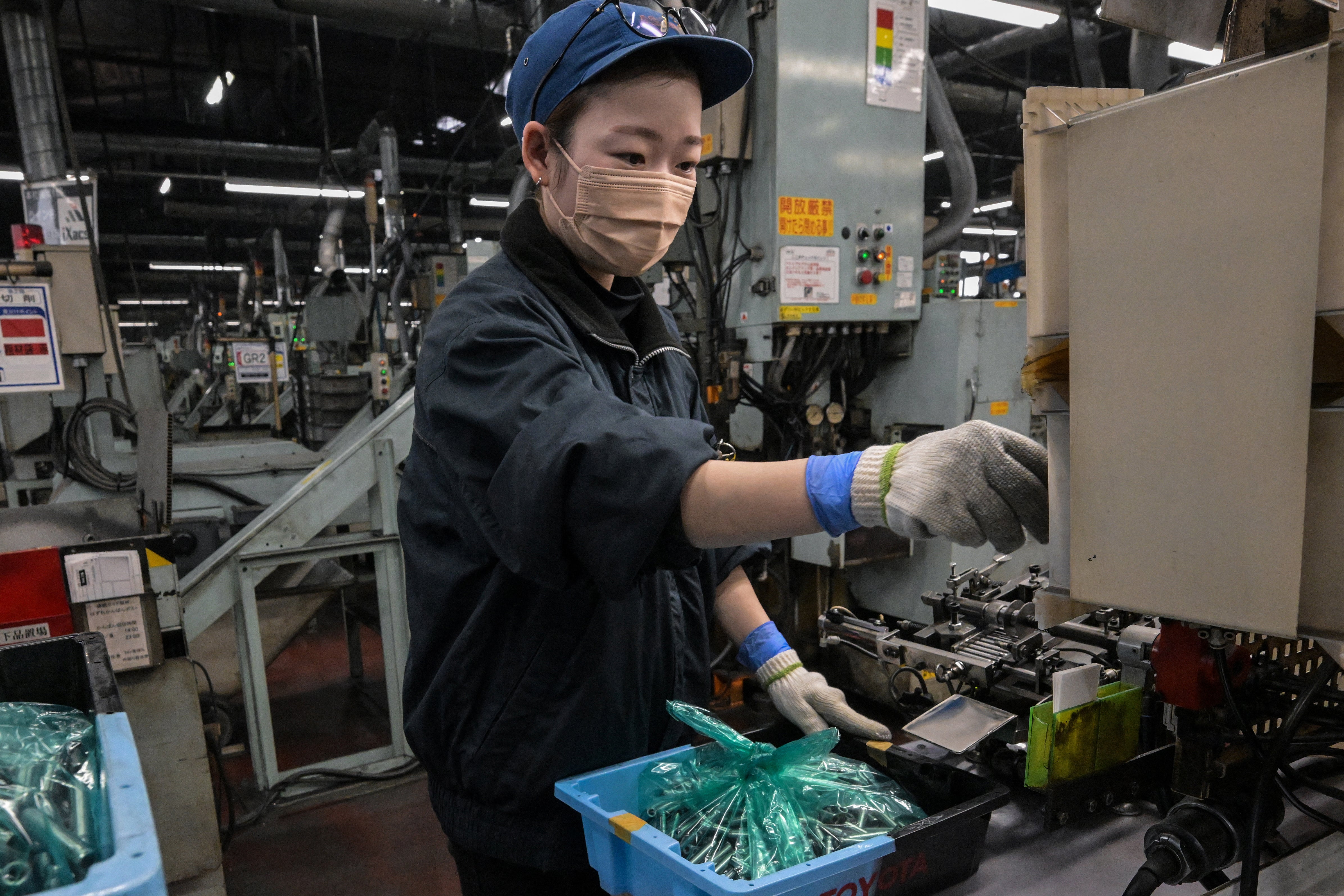Americans looking to purchase a new car are likely going to see a higher price tag, by as much as $15,000, as a result of President Donald Trump’s 25 percent tariff on foreign-made vehicles.
During his “Liberation Day” speech, Trump said his 25 percent tariff on imported vehicles would go into effect on Thursday at midnight. Beginning May 3, that tariff will also apply to imported car parts, which is likely to raise the cost of vehicles and repairs in the United States.
The president’s tariffs are part of his effort to increase domestic manufacturing, thus adding and protecting auto worker jobs.
But automakers and sellers are expecting those tariffs to be passed onto consumers.
Bank of America estimates that imported auto parts could raise the cost of vehicles by $3,285 per vehicle on average. Goldman Sachs estimates the cost of foreign-made cars could increase anywhere from $5,000 to $15,000 per vehicle.
Here’s what you need to know about the automobile tariffs.

What are the car tariffs?
The tariffs that went into effect on Thursday at midnight will apply to all foreign-assembled cars – or about half of the U.S.’s car purchases. The Trump administration believes that imposing the tariffs will increase domestic manufacturing and bring more automobile manufacturing jobs to the U.S.
Around eight million cars were imported into the U.S. last year, with a majority coming from Mexico, Canada, South Korea, Japan and Germany.
But in one month from now, those tariffs will expand to all foreign-made auto parts, which is likely to disrupt the automotive industry.
Around 60 percent of car parts are imported, even if the car is finally assembled in the U.S. Every single 2025 model car sold in the U.S. had at least 15 percent of its parts from a country outside of North America.
This is because it’s cheaper to make parts and import them than to make them in the U.S., or some parts may be more readily available in other countries.

What does this mean for buyers?
Vehicles are likely going to become more expensive, regardless of where they are assembled, due to the impact of Trump’s tariffs on supply and demand.
“The cost of vehicles will go up. It’s just math,” Mark Fields, the former CEO of Ford, told CNN. “The bottom line is there is absolutely no vehicle that won’t be impacted by tariffs.”
But cars that are mostly manufactured abroad, such as the Hyundai Elantra made in South Korea, Nissan Infiniti made in Japan or Porsche Cayman S made in Germany, will see the highest tariffs.
While automakers may try to absorb most of the increased cost, it’s likely some will be passed onto consumers as well.
Auto parts is where many Americans may feel the impact while trying to get vehicles repairs or updated. For example, research from CNN said that a car with a value of $40,000 would be hit with a $10,000 tax.
“There is a healthy debate to be had over how that cost might be shared between the suppliers, the (automakers), dealers and the final consumers,” an auto executive told the outlet last week. The consumer “will see a fair chunk of it,” they added.
Consumers may look to purchase used vehicles to circumvent the tariff, but the used car market is already dealing with a low supply of lightly used newer vehicles.
“If you just think about the overall pool of used vehicles, it’s gotten a little bit older because we had lower production and sales in 2021 and 2022, and those vehicles take time to become used vehicles,” Jeremy Robb, senior director of economic and industry insights at Cox Automotive told Car and Driver.
General Motors and other automakers also reported notable increases in their first-quarter sales, largely put down to tariff-weary consumers making purchases before prices climb.

Are there exemptions?
There are some exemptions for Mexico and Canada per the United States–Mexico–Canada, which allows for tariff-free trade between the three countries for certain products.
Vehicle parts often cross all three countries during manufacturing and assembly.
Automakers will only be tariffed for any parts made outside of the U.S. This means automakers will not be charged the tariff if an engine or battery is made in the U.S. but installed in a car in Mexico or Canada.
To incentivize buyers, Ford said it would offer employee pricing to customers from April 3 to June 2.
Will this improve the industry?
The White House is adamant that the tariffs will increase production and jobs in the U.S., but they may see job losses before seeing any are created or new factories are built.
Since the U.S. relies heavily on outside manufacturers for parts and vehicles, if those assembly plants see less demand, they may have to shut down or decrease staff to keep up with costs. This could disrupt the supply chain and thus jobs in automobile production.
Additionally, the on-again, off-again nature of Trump’s tariffs mean manufacturers are not in any rush to make sweeping changes to how they operate. “Think about a world where we’re spending billions in capital, and then it ends. We can’t be whipsawing the business back and forth,” General Motors CFO Paul Jacobson told investors, per CNN.
There are also no ways to quickly pivot and shift production to an American-first model.
“There are not a lot of levels we can pull in the very short term,” an auto executive told CNN. “You’re talking investing in new physical capacity in the U.S., which has a very long lead time,” he added.
Stellantis NV, the maker of Ram trucks and Jeeps, said on Thursday it would temporarily lay off 900 workers across five facilities in the U.S.



